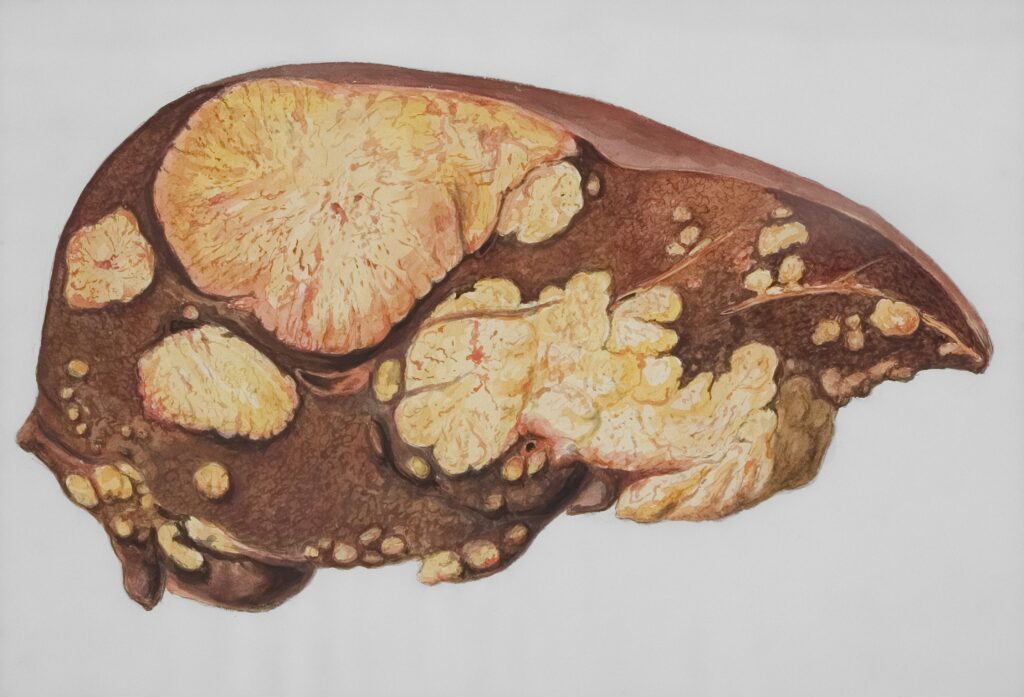Alcoholic Fatty liver disease or Steatosis of liver:
Fatty liver disease or steatosis of liver simply means the buildup of fats in the liver. The liver normally contains small amount of fats however when it reaches to more than 5% of the liver weight then it became problematic (Jeon & Carr, 2020).
Steatotic liver disease can be due to various causes that includes:
Types of Steatosis of liver:
- Alcoholic fatty liver disease ALD (due to excessive intake of alcohol)
- Non-alcoholic fatty liver disease also knows as Metabolic dysfunction associated steatotic liver disease (MASLD) (due to high level of cholesterol, hypertriglyceridemia, diabetes, obesity, PCOS, hypoparathyroidism, or hypogonadism)
How Alcohol causes FATTY liver? What’s the mechanism behind it?
As we know that liver is the main metabolizing organ in the body and acts as a filter so when the alcohol passes through the liver it causes significant damage to the liver However the liver repair itself on the daily basis but when the damaging agent is present in excessive amount it will no allows the liver to repair and heal properly so, here is the main mechanism behind this pathology
In the liver, the alcohol (ethanol) is metabolized by alcohol dehydrogenase in the cytosol and aldehyde dehydrogenase in the mitochondria. These enzymes cause the conversion of ethanol of acetaldehyde when then converted to the acetate. During this process huge amount of NADH is generated from the NAD+
This imbalance in the ratio of NADH/NAD+ cause dysfunction of fatty acid metabolism in the following ways (Jeon & Carr, 2020):
- High level of NADH causes the inhibition of beta-oxidation of fatty acid in mitochondria which leads to fatty acid accumulation in the hepatocytes.
- Chronic alcohol administration leads to decrease in expression of APoB100 gene which is essential for the synthesis of apolipoproteins, the main component for Vldl assembly this consequently leads to decrease in export of triglycerides via vldl
- The acetaldehyde that forms during alcohol metabolism forms protein adducts within the liver that damages the liver cells and further compromises the lipid metabolism.

Symptoms of ALD:
Though alcohol associated fatty liver rarely show some symptoms but some observed symptoms include:
- Abdominal discomfort due to enlargement of liver as a result of fat buildup
- Tiredness
- Weight loss
Management of Alcoholic fatty liver disease:
Alcohol avoidance is the main stray treatment of alcoholic fatty liver disease. Usually upon discontinuation of alcohol along with healthy lifestyle the liver returns to its normal healthy condition reflecting the reversible nature of alcoholic fatty liver disease. However if it is ignored and left untreated the alcoholic fatty liver disease progresses to the development of hepatitis and cirrhosis of liver.
Your liver heals when the bottle seals.”
“Say no to alcohol — say yes to liver health
Reference:
Jeon, S., & Carr, R. J. J. o. l. r. (2020). Alcohol effects on hepatic lipid metabolism. 61(4), 470-479.
This content is for informational purposes only and is not intended to substitute professional medical advice, diagnosis, or treatment. Always consult a qualified healthcare provider with any questions you may have regarding a medical condition. Never disregard professional advice or delay seeking care because of something you have read here.


